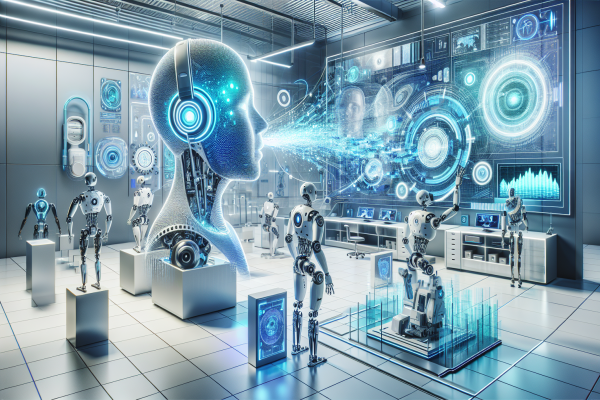
AI's Sensory Revolution: How Machines Are Learning to See, Hear, and Feel Our World
The Dawn of Machine Senses
Imagine a computer that can smell disease, feel textures, and hear emotions in your voice. This isn't science fiction - it's happening right now. Today's AI systems are developing remarkable abilities to sense and interpret the world around them, much like humans do. These advances are revolutionizing everything from healthcare to manufacturing, creating opportunities we never thought possible.Digital Vision: Seeing Beyond Human Capabilities
AI's visual capabilities have surpassed human abilities in many areas. Scale AI's groundbreaking 3D perception technology allows self-driving cars to "see" their environment with unprecedented accuracy, processing visual information 1,000 times faster than human drivers. Meanwhile, Zebra Medical's AI systems can detect diseases in medical images with 95% accuracy, often spotting issues that human radiologists might miss.The Evolution of Machine Hearing
Sound recognition has made remarkable strides. Cochlear.ai's ambient sound recognition system can identify thousands of different sounds, from breaking glass to crying babies, with accuracy rates exceeding 90%. Google's latest sound separation technology can isolate individual voices in crowded rooms - something even humans struggle with.Teaching Machines to Feel
The development of tactile sensing is transforming robotics and manufacturing. GelSight's innovative touch sensors give robots the ability to feel surface textures with sensitivity that matches human fingertips. MIT's groundbreaking tactile gloves can detect object properties that even human touch can't discern, with applications ranging from surgical robots to quality control in manufacturing.The Frontier of Digital Smell and Taste
Perhaps the most fascinating developments are in digital smell and taste. IBM's HyperTaste system can analyze liquids more accurately than human taste buds, identifying subtle chemical differences that could revolutionize food safety and quality control. Aromyx's digital nose technology can detect and analyze odors with incredible precision, opening new possibilities in disease detection and environmental monitoring.The Power of Multi-Sensory Integration
The real magic happens when these artificial senses work together. Facebook's AI systems can now simultaneously process visual and audio information, creating more natural and intuitive interactions. Sony's multi-modal AI systems combine multiple sensory inputs to create more comprehensive and accurate environmental understanding, particularly useful in robotics and virtual assistants.Looking Ahead: The Future of Sensory AI
As these technologies continue to evolve, we're moving toward a future where machines don't just compute - they experience. This sensory revolution will transform industries, enhance human capabilities, and create new possibilities we're only beginning to imagine.
[1] Scale AI Performance Data, 2023 Technical Report
[2] Zebra Medical Vision Clinical Studies, 2023
[3] MIT Technology Review: "The Future of Touch in AI", 2023
[4] IBM Research Publications on HyperTaste System, 2023

